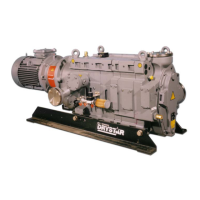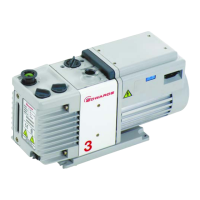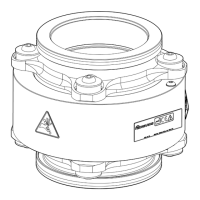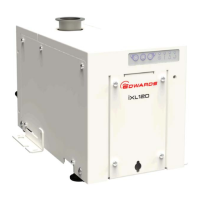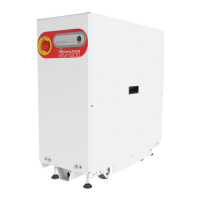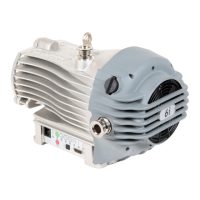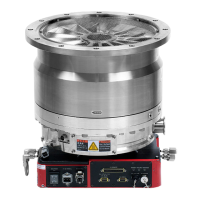A705-40-880 Issue B
Page 48 © Edwards Limited 2011. All rights reserved.
Edwards and the Edwards logo are trademarks of Edwards Limited.
Maintenance
6. Remove the plug from the inlet flush port (2), use a suitable tool to inject the cleaning solution into the port
until the cleaning solution comes out of the port, then refit the plug.
7. On pumps without a torque limiter, fit a suitable steel rod (not supplied) into the hole in the coupling hub
(Figure 15, item 5), then turn the pump clockwise through three or four complete revolutions.
8. Repeat Step 4 to 7 above as necessary, until the pump rotates freely.
9. If you have a pump-inlet isolation-valve, open the valve, otherwise, remove the blanking- flange from the pump-
inlet and reconnect the pump-inlet to your process system.
10.Refer to Figure 1. If the pump has a torque limiter and it has tripped and decoupled the pump-motor, reset the
torque limiter: refer to attached torque limiter amendment.
11.Use the four bolts to refit the coupling cover guard (14) to the pump. Tighten the bolts to a torque between 3
and 5 Nm.
12.Refit the pump-outlet (25) to your exhaust pipeline, then dispose of the deposits removed from the pump.
5.11.3 Flush a seized pump
Note: If the pump has a torque limiter and it has decoupled the pump-motor from the pump, do not recouple the
pump-motor to the pump until you have finished this procedure. If you leave the pump-motor decoupled
from the pump, it will be easier to turn the pump by hand.
1. Refer to Figure 1. Remove the four bolts which secure one of the coupling cover guards (14) and remove the
guard.
2. If you have a pump-inlet isolation-valve in your system, close the valve. If you do not have a pump-inlet
isolation-valve, disconnect the pump-inlet (3) from your process system and fit a blanking-flange over the pump-
inlet.
3. Refer to Figure 10. Remove the plug from the inlet flush port (2).
4. Disconnect the pump-outlet (3) from your exhaust pipeline and fit a blanking-cap to the pump-outlet.
5. Slowly pour a suitable cleaning solution into the inlet flush port (2). Wait for several minutes to allow the
cleaning solution to drain into the pump.
6. Repeat Step 5 until you can pour no more cleaning solution into the pump (see Tabl e 3 for the capacity of the
pump), then leave the pump for at least one hour for the cleaning solvent to fully react with the deposits in the
pump.
7. On pumps without a torque limiter, fit a suitable steel rod (not supplied) into the coupling hub (Figure 15, item
5), then try to turn the pump clockwise:
If you cannot turn the pump, continue at Step 7 (to leave the pump for longer).
If you can turn the pump, continue at Step 8.
8. Place a suitable container under the pump-outlet (Figure 10, item 3) and remove the blanking-flange.
Use a cleaning solution which is suitable for the process materials pumped. If you do not, there
may be a risk of explosion or pump damage.
Ensure that you correctly refit the blanking plugs to the purge ports on the pump. Ensure that the
threads in the purge ports are clean and free from damage, and that the plug is undamaged.
Replace damaged plugs.

